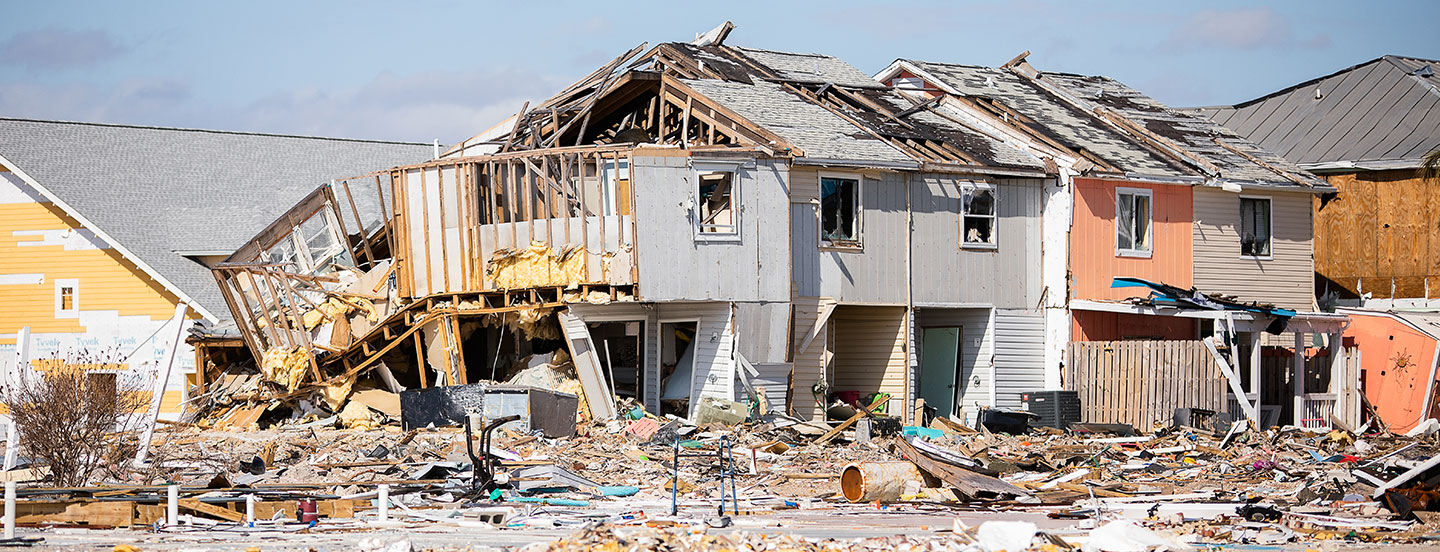Although the first legislative act of federal disaster relief in the U.S. dates as far back as 1803, the modern era of post-disaster funding can be traced to the Disaster Relief Act of 1974 and its expansion through the Stafford Act of 1988. The Federal
Emergency Management Agency (FEMA), established in 1979, coordinates much of the federal government’s natural disaster mitigation, preparedness, and response funding. FEMA’s mission is simple yet complex: helping people before, during,
and after disasters.
Minimizing Risk: FEMA Grant Programs
While FEMA has a high-profile role in assisting communities following both natural and manmade disasters, the agency has long recognized that hazard mitigation is vital to breaking the cycle of recurring damage and reconstruction, and reducing long-term
risk to people and property. There are currently four primary sources of FEMA funding for hazard mitigation projects: the Hazard Mitigation Grant Program (HMGP), the Building Resilient Infrastructure and Communities (BRIC) program, the Flood Mitigation
Assistance program, and the Public Assistance (PA) Hazard Mitigation (Stafford Act Section 406) program.
Post-disaster HMGP resources support hazard mitigation measures that reduce future losses by minimizing vulnerability and promoting community safety and vitality, with a goal of creating resilient communities that are less reliant on external financial
assistance. Our experience with this program dates to its establishment 32 years ago and encompasses all types of projects, from hazard mitigation plans and large-scale community flood protection to safe rooms and earthquake retrofits. Our knowledge
of the benefit-cost analysis (BCA) process, gained in part from having managed FEMA’s BCA helpline for nine years, has been particularly important in helping clients overcome what is often a stumbling block in preparing applications.
BRIC is now replacing FEMA’s Pre-Disaster Mitigation (PDM) Grant Program, which had originally been authorized by the Stafford Act. This program is intended to support states, tribes, territories, and local communities in undertaking risk-reducing
mitigation projects with a focus on infrastructure that, if damaged, might have a large-scale community impact. BRIC emphasizes nature-based resilience measures and protecting community lifelines and assets. We have been assisting FEMA with policy
and outreach on this new funding source, with the first application cycle now open.
FEMA’s Public Assistance program also has a hazard mitigation component. Often PA hazard mitigation support, which can only be used on damaged portions of the facility, is combined with HMGP funds that can be used on the non-damaged portions of
the facility.
 Hurricane Michael caused extensive damage to the city of Mexico Beach, Florida, in 2018. FEMA’s Public Assistance grant program supported the development of cost-effective mitigation strategies to minimize damage from future storms.
Hurricane Michael caused extensive damage to the city of Mexico Beach, Florida, in 2018. FEMA’s Public Assistance grant program supported the development of cost-effective mitigation strategies to minimize damage from future storms.
While FEMA has a high-profile role in assisting communities following both natural and manmade disasters, the agency has long recognized that hazard mitigation is vital to breaking the cycle of recurring damage and reconstruction, and reducing long-term
risk to people and property."
Jane Frantz
Helping Communities Nationwide
Through the decades, we have assisted state and local governments from coast to coast with hundreds of mitigation projects funded through HMGP and the PDM program (now transitioning to BRIC), as well as through FEMA’s post-disaster public assistance
grants. Examples include:
- Apple Branch Flood Mitigation: We assisted the City of Danville with a PDM grant application that included project scoping for stormwater management measures to address recurrent flooding of roadways and businesses in the downtown area.
- Mexico Beach, Florida: Following the devastation of Hurricane Michael in 2018, we worked closely with the City of Mexico Beach to develop cost-effective mitigation strategies to minimize future damage to municipal infrastructure under FEMA’s
Public Assistance grant program.
- Wakulla County, Florida: The county’s Mashes Sands Fishing Pier, a popular recreational spot, had failed multiple times due to storm damage in recent years. FEMA hazard mitigation funding through the Public Assistance grant program has enabled
the county to replace the vulnerable timber pier with a new concrete structure.
- California Wildfires: We assisted the California Office of Emergency Services with FEMA Public Assistance Grant applications and hazard mitigation strategies following the devastating Camp Fire and Woolsey Fire events in Los Angeles and Ventura counties.
- Hurricane Harvey: We worked with 52 communities after Hurricane Harvey to identify nearly 400 potential mitigation projects, screen them for eligibility, and develop viable subapplications totaling more than $2 billion.